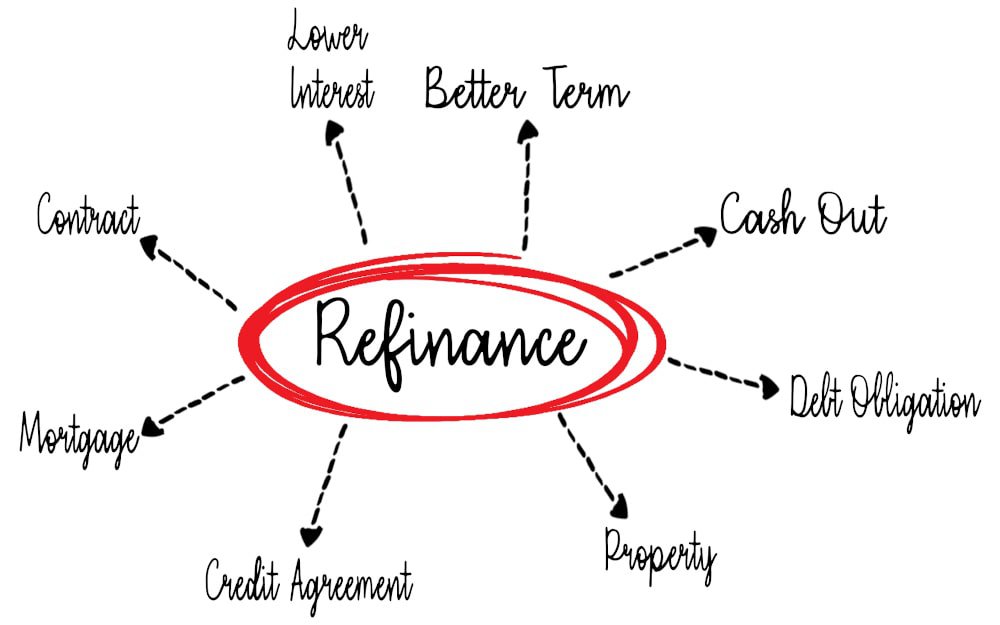Cash Out Refinance Canada: Rates & Expert Guide

Home equity access has emerged as a primary financial approach for Canadians who face increasing interest rates and economic instability. Homeowners now seek better methods to handle debt, investments, and home improvements because property values remain stable while borrowing expenses rise.
Real estate investments throughout Canada offer financial benefits and present potential risks to investors. Homebuyers who want wise borrowing choices must understand their home equity options.
Homeowners can use a cash-out refinance to obtain a new mortgage that covers their current loan amount and receive the remaining funds as cash. This guide provides Canadian homeowners with essential information about cash-out refinancing, including its operation process, suitable situations, borrowing limits, lender requirements, and comparison to HELOCs and second mortgages.
Cash Out Refinance Canada: Everything Homeowners Need to Know
The cash-out refinance process enables Canadian homeowners to obtain a new mortgage that exceeds their current balance while receiving the excess funds as cash. This strategy can eliminate high-interest debt while funding home improvements or purchasing a second property. Before applying for this option, borrowers need to understand all new financial responsibilities and eligibility criteria.
“ With a cash-out refinance, you refinance your existing mortgage to a new, larger mortgage and ‘cash out’ the difference between the two in the form of a lump sum amount. In other words, a cash-out refinance lets you borrow against your home’s equity through a mortgage refinance . Cash-out refinances are sometimes referred to as equity take-out.”
— Kirill Sukhikh , Real Estate Content Writer, WOWA
What is a cash out refinance and how does it differ from a traditional refinance?
The main difference of traditional refinancing involves obtaining improved loan conditions through reduced interest rates or moving from adjustable to fixed rates. The cash-out refinance option provides better terms while raising the total mortgage amount to give you access to the difference as cash. Your home value of $900,000 allows you to refinance up to 80% of its worth, which equals $720,000 when you currently owe $450,000. The remaining $270,000 will be available after you have paid off the initial loan.
How does a cash out refinance work in Canada under current mortgage regulations?
Most Canadian lenders allow home refinancing up to 80% of the property's appraised value. Homebuyers need to pass a mortgage stress test, which requires them to qualify at either the Bank of Canada benchmark rate or their contract rate plus 2%. The full application process includes a new appraisal, income verification, credit review, and legal registration of the new mortgage.
When is a cash out refinance a smart financial move for homeowners?
Cash-out refinancing becomes beneficial when you use the funds to enhance your financial stability or boost your home's market value. People typically use these funds to merge credit card debt, finance home improvements, or start a business. You can save thousands of dollars yearly by swapping $50,000 in credit card debt with a 6% mortgage interest rate instead of maintaining 19% interest. Home improvements that boost property value will produce lasting financial benefits. Using equity for non-essential or short-term needs may lead to future financial difficulties.
| Scenario | Use Case Description | Smart Financial Move? |
|---|---|---|
| Paying off high-interest debt | Replacing credit card debt (e.g. 19%) with lower mortgage rate (e.g. 6%) to save interest. | Yes – reduces interest burden and increases monthly savings. |
| Funding home renovations | Improving kitchens, bathrooms, or basements to increase long-term home value. | Yes – adds value to your property and builds long-term equity. |
| Investing in a business | Using equity to seed a startup or side business with potential long-term returns. | Yes, but only if the business plan is strong and risks are managed. |
| Covering non-essential expenses | Spending on vacations, luxury items, or lifestyle upgrades with no financial ROI. | No – risks overleveraging for non-productive spending. |
How much can I borrow? Using a cash out refinance calculator step by step
To determine your borrowing capacity, multiply your home's appraised value by 80% and then subtract the current mortgage balance. Your home value of $850,000 allows you to refinance up to $680,000 while receiving $280,000 in cash since you currently owe $400,000. Online calculators enable users to calculate their future monthly payments based on various interest rates and amortization plans. Lenders will evaluate your debt ratios and income to confirm your ability to afford the loan.
How do lenders evaluate risk for mortgage cash out refinance applications?
“ Refinancing is similar to applying for a mortgage. Your income, debt service ratios and credit history will be evaluated again, and you’ll need to provide similar documentation.”
— Clay Jarvis , Lead Writer, Nerdwallet
The evaluation of risk by lenders depends on credit score, income stability, employment history, and the intended use of funds. The preferred credit profile for lenders is above 680, but alternative lenders will accept lower scores at higher interest rates. The evaluation process includes assessment of your gross income and total debt service ratios. Refinancing proceeds to pay off debt or improve the property is considered lower risk than making speculative investments or personal spending.
What fees and closing costs come with a cash out mortgage refinance?
The process of refinancing requires several initial expenses . Early mortgage termination may result in prepayment penalties, especially when you have fixed-rate loans. Some lenders permit borrowers to incorporate these costs into their new mortgage so the expenses get distributed across time instead of requiring immediate payment.
| Fee Type | Typical Cost Range | Details |
|---|---|---|
| Appraisal Fee | $400 – $600 | Required to determine your home's current market value. |
| Legal Fees | $800 – $1,500 | Covers registration of the new mortgage and discharge of the old one. |
| Title Insurance | Varies | Protects against title issues; often required by the lender. |
| Administrative Charges | Varies | Includes lender setup fees and document processing costs. |
| Prepayment Penalty | Case-dependent | Applies if you break a fixed-rate mortgage early; can be significant. |
| Total Closing Costs | $2,000 – $4,000 | Depends on lender, mortgage terms, and third-party services. |
| Cost Integration Option | N/A | Some lenders allow rolling costs into the new mortgage balance. |
Can I use a cash out refinance to fund home renovations or invest elsewhere?
The cash-out funds allow borrowers to perform renovations, pay for education expenses, invest, and establish an emergency fund. Borrowers use this option to fund their projects, which include kitchen upgrades, rental suite construction, and debt consolidation. Financial sense emerges from using the funds for high-return investments because interest savings and property appreciation can offset the cost of borrowing. The key to success involves thorough planning and avoiding excessive borrowing, especially when market conditions change or your income fluctuates.
What are the tax implications of a cash out refinance in Canada?
However, tax implications can vary depending on how the funds are used. The interest may be tax-deductible if the borrowed money is used to invest in an income-generating asset, such as a rental property or stocks. However, the interest generally cannot be claimed if the funds are used for personal consumption or to renovate your principal residence. Consult a tax professional for advice on your specific situation.
“ In Canada, your mortgage interest isn’t tax deductible, even for cash-out refinances. That’s because you can only deduct interest at tax time if the loan was used for investments”
— Kirill Sukhikh , Real Estate Content Writer, WOWA
How does a cash out refinance compare with a HELOC or second mortgage?
A cash-out refinance provides a single upfront payment through a fixed payment plan. A HELOC provides more flexibility because it operates as a revolving credit line, letting you borrow funds when needed while charging interest only on the amount used. Second mortgages function as independent loans that add to your initial mortgage while requiring higher interest payments. A cash-out refinance provides lower interest rates than other options but restricts your flexibility.
“ If you are unsure of how much money you will need, taking out a HELOC may be the best choice. With a HELOC, you only pay interest on the amount you spend, making it a much more flexible loan. If you are looking to protect yourself against unpredictable expenses, a HELOC is often the perfect choice”
— Rick Sekhon , Mortgage Broker, Clover Mortgage
What is a real-life cash out refinance example and its ROI breakdown?
A homeowner who owns a $900,000 property and owes $500,000 on their mortgage can refinance their home at 80% loan-to-value to obtain $720,000 while taking $220,000 in cash. The homeowner spends $150,000 on home renovations, including a basement rental unit, and uses $65,000 to pay off their credit card debt after deducting $5,000 for closing costs. The home renovations increase the property value by $100,000, while eliminating credit card debt allows the homeowner to save $800 per month. The increased monthly mortgage payment leads to better cash flow and increased long-term equity for the homeowner.
Conclusion: Is a cash out refinance the right move for you?
A cash-out refinance can be a way to unlock the equity in your home and put it to productive use. It may offer lower borrowing costs than unsecured loans or credit cards and can help you consolidate debt, improve your property, or pursue new opportunities. But it also comes with increased mortgage payments and long-term financial responsibilities.
If you’re considering this option, speak with a mortgage broker at Clover Mortgage who can guide you through your options and help you decide whether a cash-out refinance fits your goals.
FAQs
What is the main benefit of a cash out refinance?
The primary advantage of this method is that homeowners can tap into their home equity as cash. They can use this option to eliminate high-interest debt while funding home improvements or investments through lower mortgage rates than credit cards or personal loans.
How long does the cash out refinance process take in Canada?
The entire process takes two to four weeks to complete. The appraisal process joins underwriting, document review, and legal registration to complete the entire process. The process may take longer when your lender needs additional documentation or when they require additional procedures.
Do I pay taxes on the cash I receive from refinancing?
No. The cash received from a cash-out refinance remains tax-free because it functions as borrowed money rather than earned income. The tax-deductibility of mortgage interest depends on how you spend the funds obtained through the cash-out refinance, primarily when investing.





